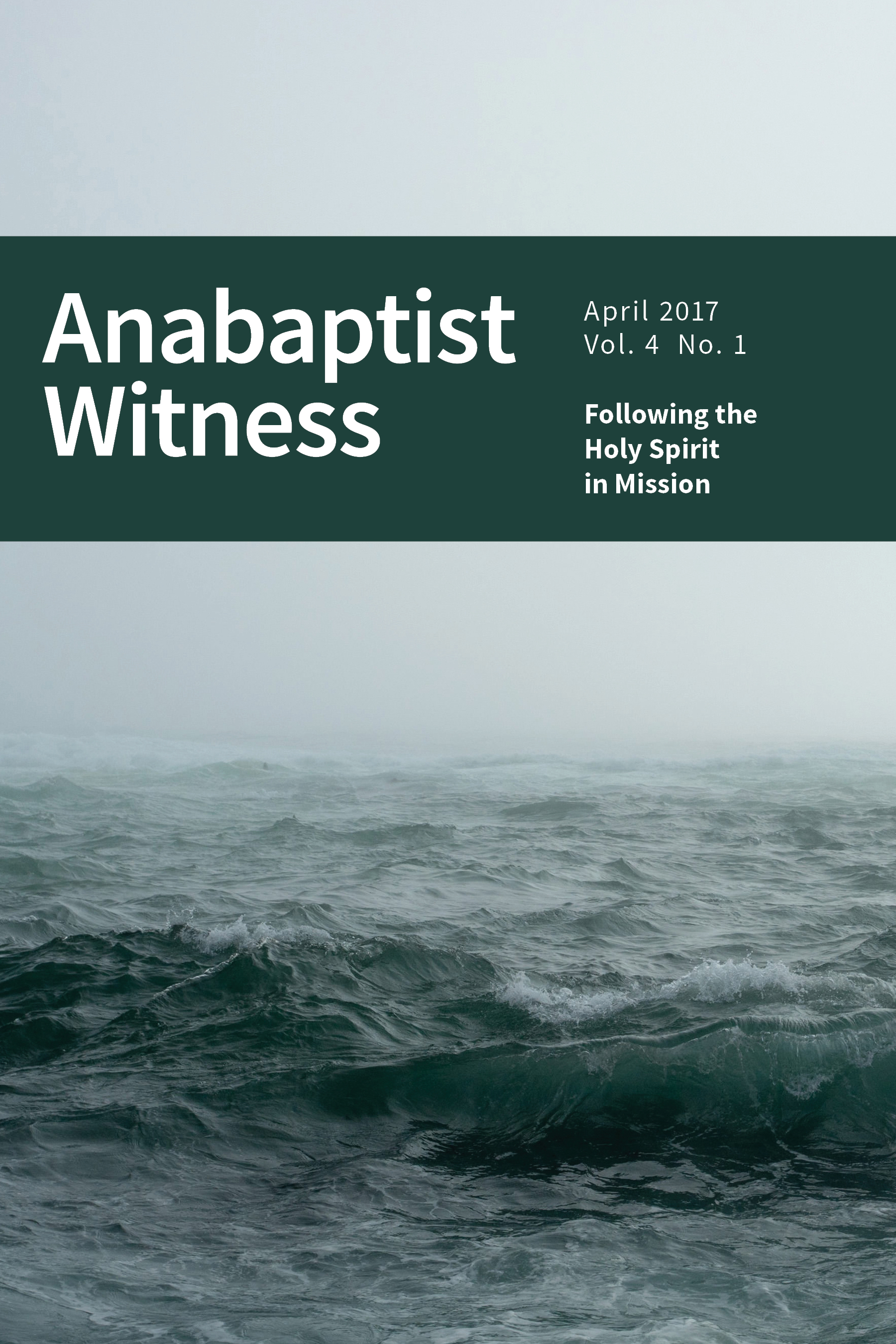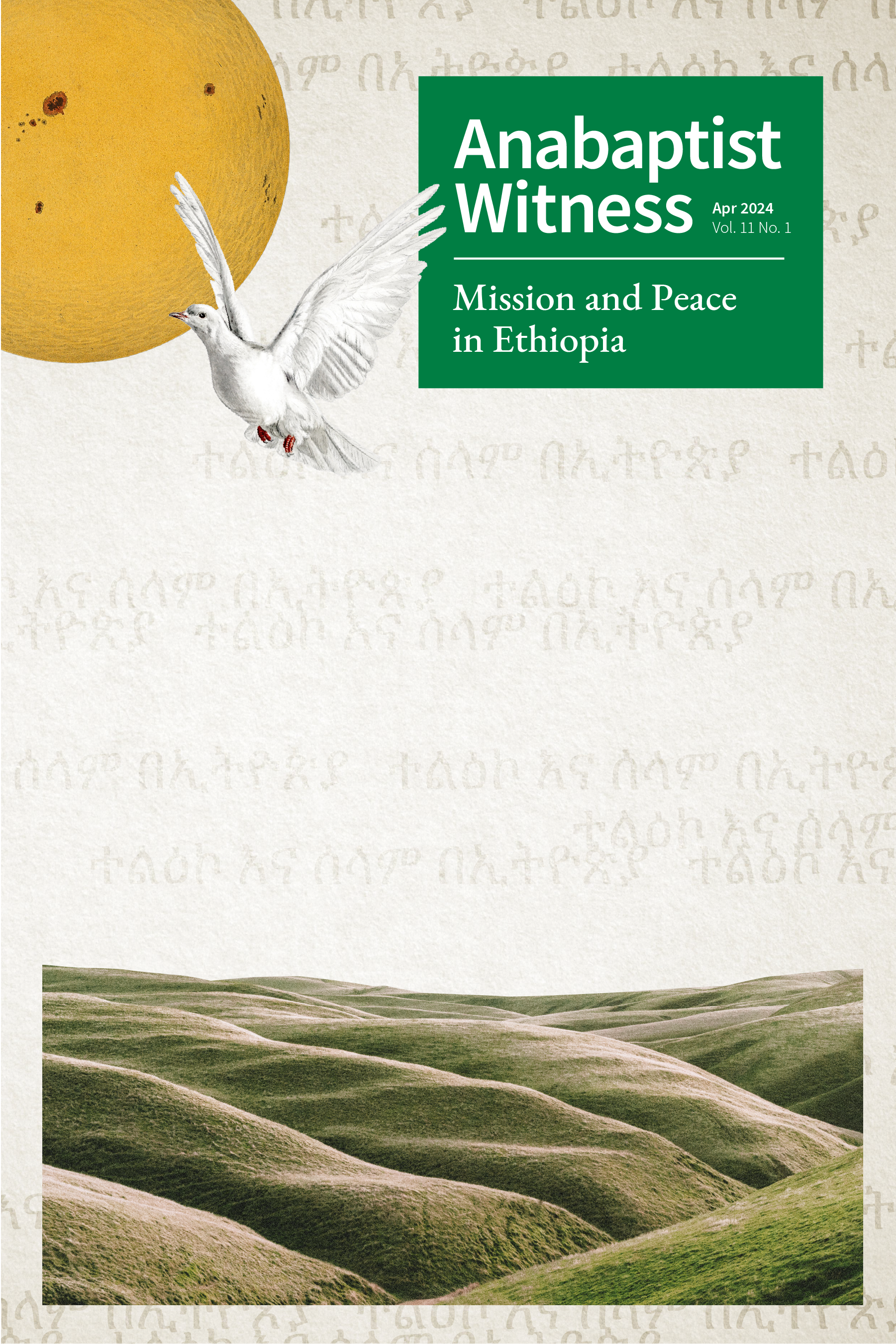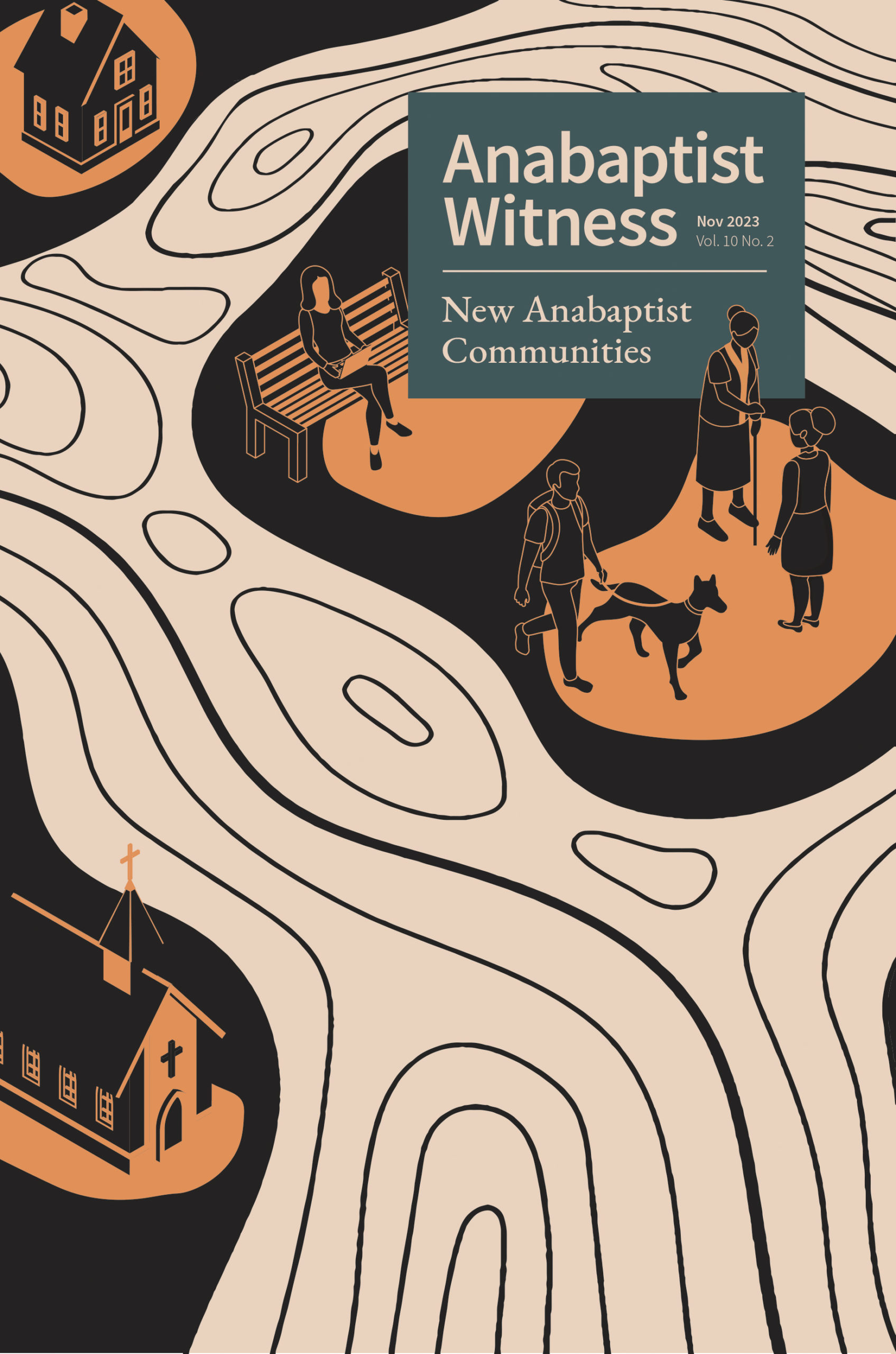Following the Holy Spirit in Mission
About This Issue Download this issue
Following the Holy Spirit in Mission
On my first visit home from seminary, I told my pastor that I had been reading and enjoying Mennonite theology. My pastor, a former Assemblies of God missionary turned nondenominational church planter, affirmed my interest but also observed that Mennonites belonged to the “obedience stream” of Christianity while we belonged to the “Holy Spirit stream.” Given his frequent juxtapositions between deadening legalism and life in the Spirit, this comment served as a clear warning not to get too caught up in the Mennonite focus on obeying Christ’s commands.
Nevertheless, I did (thankfully) get caught up in becoming a Mennonite—I converted in 2006—and soon learned of the lively debate among Anabaptists and Mennonites over the relationship between Christ-centered discipleship and serious attention to the Holy Spirit. Many Anabaptists and Mennonites have their own versions of my pastor’s warning, and they hope to encourage their coreligionists to see obedience as a gracious gift of the Spirit. Oftentimes this encouragement is phrased as a need to learn from Spirit-oriented traditions, especially Pentecostals and charismatics. Occasionally the encouragement is to recognize the traces of the Spirit in the Anabaptist and Mennonite tradition itself, to see the tradition as not only a part of the “obedience stream” but also at least potentially a part of the “Holy Spirit stream.”
Recent research strengthens this claim that life in the Spirit is an essential component of the tradition. Work by Neal Blough, Charles Byrd, and others demonstrates how life in the Spirit—including, perhaps, the charismatic gifts of the Spirit—was a central theme for the first generations of Anabaptists in sixteenth-century Europe.[1] My own survey of the place of the Holy Spirit in early Anabaptist and later Mennonite life and thought indicates the existence of a rich pneumatological seam spanning from the sixteenth century to the present.[2] This seam draws from classical Christian teachings on the Spirit as well as from renewal movements—such as Pietism, Revivalism, and Pentecostalism—and centers on the relationship between the Spirit and the disciplined community of disciples.
That said, there has been considerable reticence throughout this history to speak of the Spirit, and there has been a tendency to pit Word and Spirit against each other—with advocates for the Word (Scripture, Jesus) often gaining the upper hand. The caricature of Anabaptists and Mennonites as belonging to Christianity’s “obedience stream” takes root in this reality. If that caricature is to be overturned and life in the Spirit is to be integrated into the heart of the tradition, we may need to imitate those forebears who learned from the past (including but not limited to their Anabaptist and Mennonite past) and engaged the Spirit-led movements of their own days regardless of the tradition or denominational affiliation of those movements.
This need for broad receptivity to past and present witness to the Spirit becomes especially apparent when the question of the Spirit’s relation to mission arises. In recent years, missiologists have emphasized that Christian mission is fundamentally a response to what the Spirit is doing in the world. According to British missiologist Kirsteen Kim, the standard missiological focus on “the Spirit of mission”—which examines what the Spirit is doing in the church’s missionary work—needs to be supplemented by consideration of “the mission of the Spirit.”[3] In other words, we are called to follow the Spirit in mission, not to expect the Spirit to follow us. Kim and Pentecostal missiologists Amos Yong and Andrew Lord suggest that this reorientation has significant implications for Christian understanding of religious and cultural pluralism.[4] Christians in mission are led by the Spirit to learn from others about what the Spirit is doing among them. “Discerning the spirits” (1 Cor 12:10; 1 John 4:1–6) is a core mission task.
The articles in the present issue of Anabaptist Witness help us in this task by showing how Anabaptists and Mennonites, as well as others, have followed and might follow the Spirit in mission. American Pentecostal missiologist Jody Fleming argues that putting Anabaptist and Pentecostal-charismatic traditions into conversation may help us have a wider view of the Spirit’s work and therefore a wider, more holistic sense of our mission. Johannes Reimer, a German Mennonite Brethren missiologist who teaches in South Africa, describes how the Mennonite Brethren church was born of a Spirit movement that issued directly in mission. Reimer challenges his fellow German MBs to recover this missional vision of the Spirit even as they guard against excesses.
Former Mennonite Church Canada Witness worker Andrew Suderman—whose service included directing the Anabaptist Network in South Africa—addresses questions of mission and power in his essay. After tracing a post-apartheid drift by South African churches toward a “Constantinian” alliance with state power, Suderman details how the Spirit promised by Jesus empowers the church for kenotic witness and enables the renewal of prophetic, liberating elements of South African church history. Writing in “postmodern, post-Christendom” Britain, Assemblies of God pastor Chris Horton finds the sixteenth-century Anabaptist coordination of Spirit and discipleship particularly helpful for mission in his context. Spirit-motivated mission meets skeptics by prioritizing relationship-building and the integrity of the discipleship community.
Andrew Mashas works with Eastern Mennonite Missions in Pennsylvania. His contribution tells the story of the Meserete Kristos Church in Ethiopia as a work of the Spirit—from the MKC’s founding, then through a long period of persecution, and finally into its present flourishing. Carol Tobin, of Virginia Mennonite Missions, poetically meditates on the Spirit’s healing yet sometimes bewildering presence.
Together with the book reviews, the articles and poems in this issue of Anabaptist Witness invite us to discern where the Spirit has been, is, and will be moving. They invite us into the “Holy Spirit stream,” to follow the Spirit in mission.
Jamie Pitts, co-editor
[1] Neal Blough, “The Holy Spirit and Discipleship in Pilgram Marpeck’s Theology,” in Essays in Anabaptist Theology, ed. H. Wayne Pipkin (Elkhart, IN: Institute of Mennonite Studies, 1994); Charles Byrd, “Pentecostalism’s Anabaptist Heritage: The Zofingen Disputation, 1532,” Journal of the European Pentecostal Theological Association 28, no. 1 (2008): 49–62; Charles Byrd, “Sixteenth Century Anabaptism and the Manifestation of Glossolalia” (conference paper, Society of Pentecostal Studies, Evangel University, 2014).
[2] Jamie Pitts, “The Spirit in Mennonite History” (paper for the Mennonite Church USA-Church of God (Cleveland) ecumenical dialogue, 2016). “Pneumatology” concerns the Christian doctrine of the Holy Spirit. Several of the essays in this issue of Anabaptist Witness reinforce my thesis.
[3] Kirsteen Kim, The Holy Spirit in the World: A Global Conversation (Maryknoll, NY: Orbis, 2007). See also John V. Taylor, The Go-Between God: The Holy Spirit and the Christian Mission (London: SCM, 1972).
[4] Kim, The Holy Spirit in the World, chapters 5–7; Andrew Lord, Spirit-Shaped Mission: A Holistic Charismatic Missiology (Milton Keynes: Paternoster, 2005), chapter 6; Amos Yong, Beyond the Impasse: Toward a Pneumatological Theology of Religions (Grand Rapids, MI: Baker, 2003).





